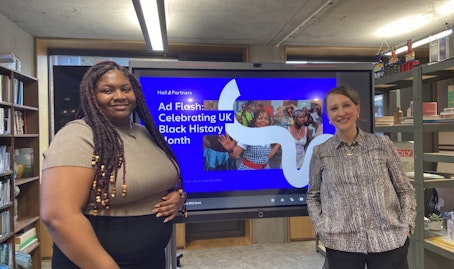Perspectives
Disappearing act: How to stop your brand becoming invisible in the big brand ecosystems

Kurt Stuhllemmer
Hall & Partners

This piece was first published by WARC.
The ecosystems being established by some of the world’s biggest brands can be both an opportunity and a trap for small and niche brands.
While more brands seek to gain from owning more parts of the customer journey by building connected experiences, others risk becoming invisible along the way.
Arguably Apple, the global tech giant, was one of the first to slowly monopolise more and more touchpoints through its own ecosystem. When we think about the iPhone, this has become a closed loop of apps, services and devices. You can message, pay, watch, track your health and control your home without ever leaving Apple’s world. And other brands are following. Everyone from Amazon to Disney and Lego.
In these ecosystems, partner brands can easily disappear in the background. After all, how many people know which bank card they use with Apple Pay or even notice the bank’s role at all. How can smaller brands or service providers stay visible by leveraging the strength of their brand to survive and thrive?
Find a clear role and own it
This is a bit like standing your ground. Monzo, the UK digital bank, is a good example of a bank that could easily have been swallowed up as the incumbents were in Apple’s ecosystem, losing all of the equity they had built on metal cards as touchpoint use. Instead, while Monzo does work with Apple Pay and Google Pay, it maintains visibility by focusing on what sets it apart: instant spend notifications, savings pots and user-friendly budgeting tools. It doesn’t try to compete with the tech giants at every level and shows up where it matters to its customers.
Build your own ecosystem
Every big global brand started life as a smaller or more niche brand. Apple is the perfect example. It didn’t grow and build its ecosystem by copying IBM. No. Instead, it focused in on its differences, creating a strong sense of brand identity across touchpoints.
The tech giant continues to strengthen the world of Apple. In 2025, it partnered with AI company Anthropic to embed Claude AI into Xcode, Apple’s core software development platform. This move not only streamlines how developers write, test and debug apps, it also accelerates the creation of high-quality apps that stay within Apple’s ecosystem. By powering better apps, faster, Apple reinforces the value of its App Store and keeps both developers and users more tightly locked into its world. It’s a strategic play to grow and protect its ecosystem from the inside out.
Rapha, the cycling brand that sells high-end cycling apparel, has also started to build an ecosystem. As well as its jerseys, gilets and shorts, Rapha also runs cycling clubs, events and cafés. It’s built a lifestyle and a community around the brand. Its clear values and community ethos keeps people coming back. That’s an ecosystem, just on a smaller scale.
Other small brands are taking a similar approach. Beauty Pie, a direct-to-consumer beauty brand, isn’t just about products, it’s about membership, education, and value. Its ecosystem includes blog content, expert advice, and a member community. These added-value touchpoints deepen engagement and build loyalty far beyond a single purchase.
Partnerships can help, but they need to be strategic
Take Headspace. Rather than building its own health tracker, it partners with brands like Nike and Spotify, but it does so in ways that highlight its distinctive value. It shows up as the expert in mindfulness, not just a background app.
Another layer of complexity in strategic partnerships comes from the evolving relationship between traditional TV aggregators like Sky and OTT (over-the-top) streaming services like Netflix, Prime Video, Paramount+ and Apple TV+. These brands were once in direct competition, but the industry shift toward consolidation and aggregation has driven a new kind of collaboration. By allowing OTT services to exist as apps or channels within Sky’s interface, both sides benefit. Sky extends its role as the unified gateway to content. The inclusion of brand-name platforms like Netflix or Disney+ enhances the value of its offering and reduces churn.
The streamers, meanwhile gain frictionless access to living-room audiences without building out their own hardware or infrastructure. They avoid being siloed on individual devices or buried in app stores. Visibility within Sky's environment ensures they stay top-of-mind during a critical discovery moment: when the customer picks up the remote.
It’s not about who owns the whole journey — it’s about where your brand shows up, and whether it adds value in that moment.
Focus on distinctiveness, not just visibility
To avoid getting lost, brands need to think beyond just being seen. They need to be remembered. That means identifying the one thing they bring to the table and ensuring that the core message consistently shows up across the journey. Think about:
· What does your brand offer that no one else does?
· Where in the journey does that matter most?
· And how can you design those moments so that people remember you?
To be more distinctive, you can:
Audit your customer journey: Understand where your brand appears, and where it disappears. Fix the gaps.
Design for interruption: Use tone, design, and functionality to make your presence felt, even when you’re not the hero brand in the moment.
Use brand assets consistently: Colours, tone of voice, naming conventions and owning your codes, especially in shared or white-label environments, are all critical.
Invest in moments of delight: A memorable notification, email, or micro-interaction can help consumers recall your brand long after the main experience ends.
Take Too Good To Go, the app that connects users to restaurants and shops with surplus food. While it relies on the infrastructure of Google Maps, mobile payments, and local retailers, it ensures it’s remembered through playful UX copy, distinct branding, and a mission that users want to talk about. That’s distinctiveness in action.
Learning from brands that got lost along the way
They say you’re never too old to stop learning, and this is as true for brands as it is for people.
We can look to the past to see examples of what happens when you get it wrong. It can cost you everything.
Few may remember Quibi, the short-form video streaming platform. Despite backing from Hollywood and big budget content, Quibi launched in a tightly closed app, refusing to integrate with TV casting or wider content ecosystems like Roku or Apple TV. Consumers were already juggling multiple content platforms, and Quibi’s refusal to play nicely made it irrelevant, very fast. It shut down in under a year! People need to see you in relevant places and entry points. Don’t close the loop for greater control and risk loosing visibility, salience and exposure.
Jawbone, the wearable tech company that once competed with Fitbit, is another example. Despite attempts to build an ecosystem around health tracking, the brand struggled with product reliability and failed to create a platform that users felt emotionally connected to. Meanwhile, Fitbit leaned into partnerships (with insurers, gyms and even Google) and leveraged a clearer user experience. Jawbone eventually shut down in 2017. This reminds us that brand building is about what you make people feel and the advantages people think you deliver. Walk the walk and talk the talk, any gaps get exposed quickly.
Even Yahoo offers a lesson. Once a dominant portal and media ecosystem, Yahoo tried to be everything — search engine, news aggregator, email, video and finance. But the lack of focus and poor integration across services made it forgettable in the face of more focused, seamless experiences from Google and Facebook. Its piecemeal ecosystem never truly felt like a whole and seamless experience. Brands need to think about what it is that they want people to do within and across an ecosystem, and how does that get people to interact in meaningful and connected ways.
The final act
Being part of a big ecosystem isn’t the problem. Being forgettable is. Brands that understand their strengths, and design around them, have a better chance of staying in the picture, no matter who they’re partnering with.
Talk to our team of experts
Learn how we can deliver actionable insights and creativity to drive brand growth.







